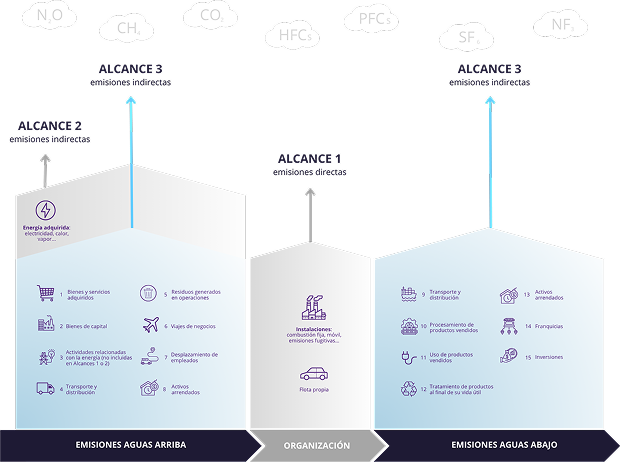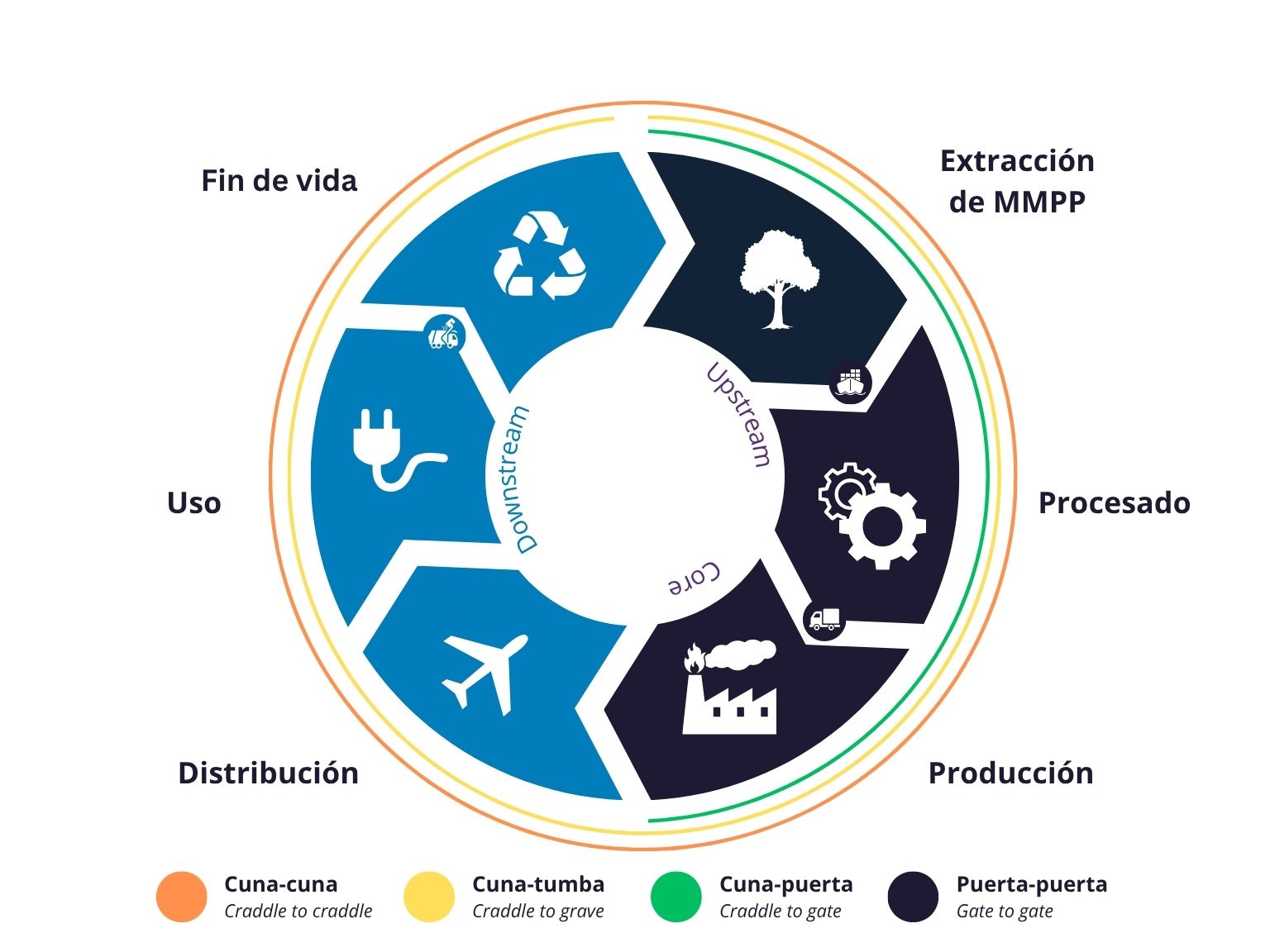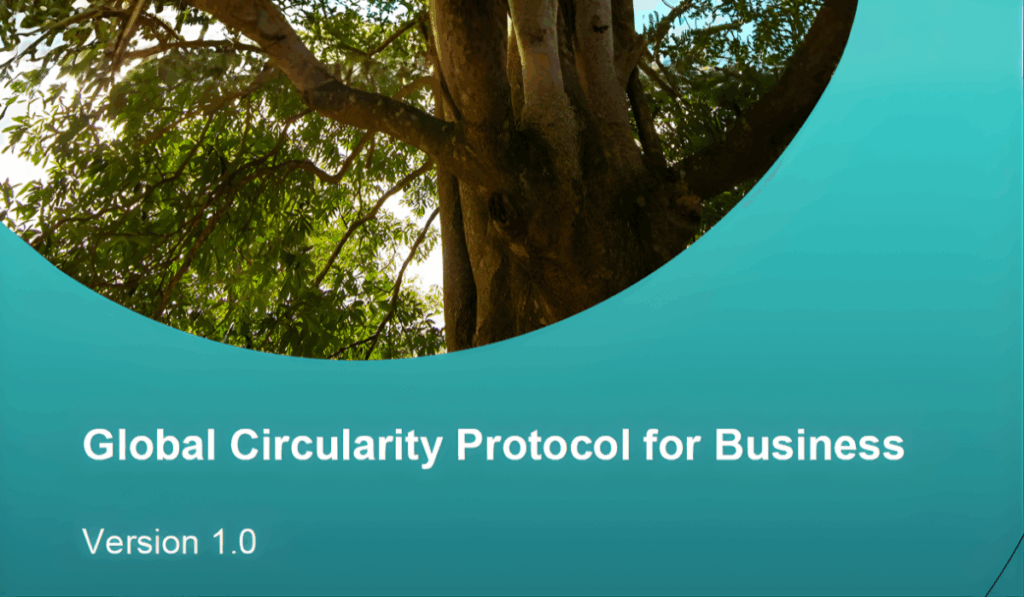The carbon footprint has become an essential tool for organisations to understand and manage their climate impact. Whether at the product or organisational level, measuring greenhouse gas (GHG) emissions helps identify reduction opportunities, improve efficiency, and move towards decarbonisation.
This insight provides a clear and technical introduction to the core concepts, measurement approaches, and the main international standards.
What is the carbon footprint?
The carbon footprint is an indicator that quantifies the total amount of greenhouse gases (GHGs) emitted directly or indirectly by an activity, organisation, product, or service. It is expressed in kilograms of CO₂ equivalent (kg CO₂e) and helps identify emission sources and define mitigation strategies.
Although it is expressed in kg CO₂e, the carbon footprint includes various GHGs such as methane (CH₄), nitrous oxide (N₂O), and fluorinated gases. Each gas has a different global warming potential (GWP), which is why CO₂e is used as a common unit for comparison.
Organisational carbon footprint: corporate-level approach
The organisational carbon footprint assesses emissions linked to all activities carried out by an entity over a defined period. For its calculation, two internationally recognised standards are widely used:
- GHG Protocol: developed by the World Resources Institute (WRI) and the World Business Council for Sustainable Development (WBCSD), it provides a detailed structure to identify and categorise emissions into three scopes:
- Scope 1: direct emissions from owned or controlled sources
- Scope 2: indirect emissions from purchased electricity, heat, or steam
- Scope 3: other indirect emissions throughout the value chain
- ISO 14064-1: an international standard that sets out principles and requirements for the quantification and reporting of GHG emissions and removals at the organisational level. It enables the structuring and verification of carbon inventories, ensuring transparency and consistency.
Both approaches are complementary and can be used together or independently, depending on the context and the objectives of each organisation.


Product carbon footprint: life cycle approach
The product carbon footprint (PCF) focuses on the emissions generated throughout the life cycle of a good or service, from raw material extraction to final disposal. This approach helps identify critical stages and opportunities for improvement across the entire life cycle.
Calculating the PCF requires clearly defining the system boundaries (e.g., cradle-to-gate or cradle-to-grave) and applying allocation rules in shared processes or those involving co-products. These methodological choices directly influence the results and their comparability.
In addition to being a technical tool, the PCF also plays an increasingly important role in environmental communication. When based on recognised standards (such as ISO 14067) and properly verified, it can be integrated into Environmental Product Declarations (EPDs) or support credible environmental claims. In these contexts, it contributes to greater transparency and helps prevent greenwashing.
Carbon footprint assessments are typically supported by Life Cycle Assessment (LCA) tools such as SimaPro, GaBi or OpenLCA, which enable accurate modelling of the different stages of a product’s life cycle. These tools rely on emission factor databases such as ecoinvent or Agri-footprint. Emission factors published by official bodies such as the Ministry for the Ecological Transition and Demographic Challenge (MITERD) are also used, particularly in organisational calculations or simplified approaches.
Three main standards guide the evaluation of PCFs:
PAS 2050: developed by the British Standards Institution (BSI), this standard provides a methodology for assessing the GHG emissions of products and services throughout their life cycle. It supports comparison between similar products and informed decision-making across the supply chain.
ISO 14067: this international standard defines the principles, requirements, and guidelines for quantifying and reporting a product’s carbon footprint, based on life cycle assessment standards ISO 14040 and ISO 14044. It enables detailed and consistent evaluation of emissions associated with specific products.
GHG Protocol Product Standard: published by the World Resources Institute (WRI) and the World Business Council for Sustainable Development (WBCSD), this standard provides a comprehensive framework for measuring and reporting product GHG emissions throughout the life cycle. It is consistent with other standards such as PAS 2050 and is designed to support strategic sustainability decisions.
Beyond regulatory compliance, PCFs offer a practical approach to identifying emission hotspots and improving products from the design phase (ecodesign), selecting low-carbon materials, or making strategic supply chain decisions. In this sense, PCFs are a key driver of eco-innovation and sustainable competitiveness.
Benefits of measuring and managing the carbon footprint
Implementing carbon footprint measurement and management offers multiple advantages:
- Regulatory compliance: facilitates alignment with environmental regulations and international standards, such as the revised Royal Decree 163/2014 (updated in 2024), which governs the carbon footprint registry, offsetting, and removal projects in Spain. It also addresses European requirements such as the Corporate Sustainability Reporting Directive (CSRD), which obliges large companies to report detailed information on their environmental performance, including GHG emissions.
- Operational efficiency: quantifying emissions helps identify inefficient or carbon-intensive processes, making it easier to implement energy optimisation measures and cost reductions.
- Competitive and reputational advantage: transparently communicating the carbon footprint improves corporate image, builds consumer and client trust, and positions the company as a sustainability leader.
- Access to markets and sustainable finance: information on climate impacts is increasingly required in public tenders, supplier agreements, and ESG criteria for green financing.
- Strategic preparedness for future regulation: measuring and managing emissions today helps meet stricter future requirements, minimising regulatory and reputational risks.
The carbon footprint is a key tool for organisations to understand and manage their environmental impact. Adopting recognised standards and systematic approaches not only ensures compliance with regulatory requirements but also drives innovation and corporate sustainability.
Measuring, analysing, and acting are essential steps in any environmental transformation process. At Baisma, we support organisations in analysing and communicating their impacts in a technical and transparent way.
Interested? Get in touch.
Insights sugeridos

Integrating biodiversity and natural capital into corporate strategy

Global Circularity Protocol v1.0: What it is and how it applies to business

Circular economy indicators: basics, frameworks and how to apply them
